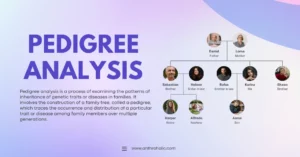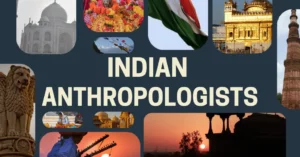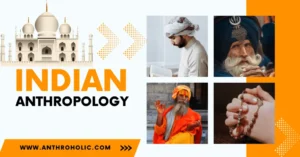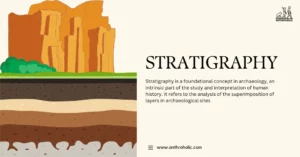+91-7303290503, +91-9557169661 | MON to SUN 10:00 AM - 6:00 PM
Margaret Mead
Few figures in 20th-century social science sparked as much debate or did as much to bring anthropology into the public eye as Margaret Mead. A cultural anthropologist, writer, and speaker with a flair for clarity and bold ideas, Mead reshaped how Americans thought about adolescence, gender, and the nature of culture itself. With fieldwork spanning from Samoa to Papua New Guinea, and a writing style accessible to both scholars and general readers, she turned complex cultural insights into mainstream conversation.

Born in an era when anthropology was still defining itself, Mead brought fresh eyes to old questions. Were behaviors like aggression, nurturing, or emotional development natural or learned? Was adolescence universally stormy, or did culture shape teen angst? Her answers were provocative, especially in a conservative America facing rapid social change.
Early Life and Education
Margaret Mead was born on December 16, 1901, in Philadelphia, into a progressive, intellectual household. Her father, Edward Mead, was a financier turned sociologist, and her mother, Emily Meade, was an artist and teacher. Their home was steeped in social consciousness, giving young Margaret an early appreciation for cultural diversity and change.
She attended a Quaker school and later began studies at DePauw University in Indiana before transferring to Barnard College in New York City. At Barnard, she earned her bachelor’s degree in 1923, studying under the renowned anthropologist Franz Boas. She then pursued her PhD at Columbia University under Boas’ mentorship, completing it in 1929. At Columbia, she was also influenced by Ruth Benedict, whose ideas on cultural patterns deeply shaped Mead’s thinking.
Samoa Fieldwork – Coming of Age in Samoa
After earning her bachelor’s, Mead embarked on her first fieldwork expedition to American Samoa in 1925, funded by the National Research Council. There, she lived in an isolated village and studied adolescent girls, examining their daily lives, social rites, and coming-of-age rituals. Her research revealed that Samoan teens experienced a more relaxed, integrated transition into adulthood compared to American youth.
This groundbreaking work culminated in her first major publication, Coming of Age in Samoa (1928), which argued that adolescence is not inherently turbulent but shaped by cultural context. The book became a bestseller, thrusting Mead into the spotlight and illustrating anthropology’s ability to challenge deeply-held beliefs about human nature.
Papua New Guinea Fieldwork — Growing Up in New Guinea
Building on her success, Mead turned her attention in 1928 to New Guinea, studying three different tribes within the Manus Province. She and her husband, Reo Fortune, lived side by side with local communities, meticulously documenting child-rearing methods, social structures, and gender roles.
The work produced another major book, Growing Up in New Guinea (1930), which shed light on how a child’s development was deeply intertwined with cultural systems from parenting styles to economic roles. Her analysis emphasized that culture not biology alone plays a central role in shaping personality and societal organization.
Major Theoretical Contributions
Margaret Mead was a driving force behind cultural determinism the idea that culture, not biology, forms who we are. She challenged prevailing notions that behaviors like aggression or emotional expression were hardwired. Instead, Mead argued through her Samoa and New Guinea studies that child-rearing practices and social expectations shape personality from a young age.
She also sparked vital conversations about gender roles. In Sex and Temperament in Three Primitive Societies (1935), Mead compared three New Guinea communities and revealed that traits like “masculinity” and “femininity” varied dramatically across cultures one tribe saw men as nurturing, another men as assertive showing that these traits are culturally encoded, not biologically destined.
Furthermore, Mead broke new ground on adolescence. Her depiction of Samoan teens as free of American-style angst questioned the idea that teenage turmoil was universal. This insight fed broader debates about youth, stress, and cultural pressure in the West.
Influence and Public Outreach
Mead was not confined to academia she was a cultural translator. She wrote with clarity and energy for the public, appearing on radio, television, and in newspapers to advocate for understanding across cultural divides. Her voice was influential during the World War II era when she contributed to government committees on family planning and child welfare, and later advised on education, race relations, and environmental issues.
Her work inspired a generation of students especially women anthropologists and helped shape institutions and funding priorities around social science. Through founding roles and advisory positions (such as at the American Museum of Natural History and Planned Parenthood), she extended her impact far beyond her research field.
Notable Publications
- Coming of Age in Samoa (1928) – Revolutionized perceptions of adolescence and cultural relativity.
- Growing Up in New Guinea (1930) – Deep observations linking culture with childhood development.
- Sex and Temperament in Three Primitive Societies (1935) – A landmark in gender anthropology.
- Male and Female (1949) – Expanded on gender roles and biological vs. cultural explanations.
- Culture and Commitment (1970) – Examined culture in the context of war and peace; a mature reflection on her lifetime of thinking.
Conclusion
Margaret Mead was far more than a prolific anthropologist she was a cultural force who helped shift the way Americans think about society, gender, and identity. Her fieldwork opened windows into worlds previously dismissed or misunderstood, and her fearless interpretations challenged deeply held assumptions about human nature. By making complex cultural insights accessible and engaging, she brought anthropology into living rooms, classrooms, and public debates.
Though some of her conclusions particularly from Coming of Age in Samoa have sparked critical reevaluations, her legacy remains firmly intact. Mead helped carve a space for women in science, insisted on the importance of understanding cultural context, and reminded the world that to know others is to know ourselves better. In a time of deepening cultural divides, her message that behavior is learned, not fixed—feels as timely as ever.




